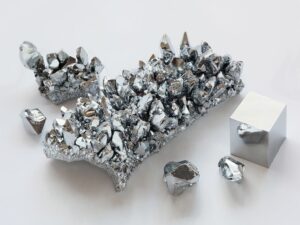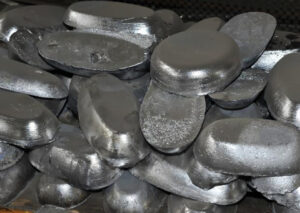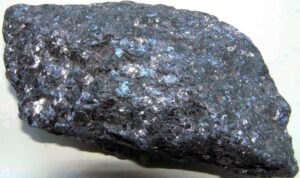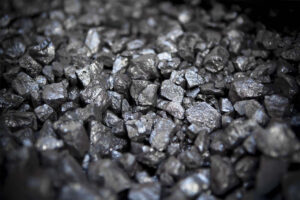
In January-November 2025, Ukraine increased imports of lead and lead products by 6.1 times, to $7.323 million. In November, lead imports amounted to $436,000.
At the same time, exports of lead and lead products during this period decreased by 17.6% to $8.911 million. In November, exports amounted to $738,000.
In 2024, the country increased imports of lead and lead products by 2.4 times, to $2.391 million, while exports decreased by 22.9%, to $11.401 million.
In 2023, compared to the previous year, less lead and lead products were imported into Ukraine — $989 thousand (-65.2%), while exports increased by 23.5% to $14.778 million.
Lead is currently mainly used in the production of lead-acid batteries for the automotive industry. In addition, lead is used in the manufacture of bullets and certain alloys.

Ukraine sharply increased imports of lead and lead products—by 8.9 times, to $6.89 million in the first ten months of 2025.
At the same time, exports fell by 16.4% to $8.17 million.
For comparison, in 2024, lead imports increased 2.4 times to $2.39 million, while exports fell by almost a quarter to $11.4 million.
Lead is currently mainly used in the production of lead-acid batteries for the automotive industry. In addition, lead is used in the manufacture of bullets and certain alloys.

Global lead and zinc production will exceed demand in 2025 and 2026, according to forecasts by the International Lead and Zinc Study Group (ILZSG).
Refined lead output is expected to increase by 2% this year to 13.34 million tons. This will mainly be driven by increased production in Canada, Germany, India, Mexico, Sweden, and Brazil, while Kazakhstan, the UK, and the US are expected to see a decline in output.
In 2026, global production will grow by 1% to 13.47 million tons due to increased output in Brazil and India, as well as a recovery in Kazakhstan. At the same time, experts predict a decline in China and the UK.
Global lead consumption this year may increase by 1.8% to 13.25 million tons, including 1.8% in Europe, 6.6% in the US, and 0.9% in China. Next year, global demand for the metal is expected to increase by 0.9% to 13.37 million tons, with China seeing a 1.7% decline.
Thus, in 2025, the global market will see a lead surplus of about 91,000 tons, and next year the surplus will increase to 102,000 tons, according to the group’s report.
Global refined zinc production is expected to increase by 2.7% to 13.8 million tons this year.
In particular, production in China will grow by 6.2%. Output is also expected to grow in Norway, where Boliden completed the expansion of the Odda plant’s production capacity by 150,000 tons per year in March. Meanwhile, zinc output is forecast to decline in Italy and Japan due to the closure of Glencore and Toho Zinc plants in these countries, as well as in Brazil, Canada, Mexico, and South Korea.
In 2026, global zinc production will rise by 2.4% to 14.13 million tons. An increase is expected in Brazil, Canada, Norway, and China.
Metal consumption this year may grow by 1.1% to 13.71 million tons. In particular, an increase of 1.3% is expected in China and 0.7% in Europe. Experts also suggest the possibility of an increase in demand in India, Japan, Saudi Arabia, Thailand, and Vietnam, as well as a decline in Brazil and South Korea.
In 2026, global demand for zinc will increase by 1% to 13.86 million tons. In particular, it will rise by 0.1% in China, with increases also forecast in Europe, Brazil, India, and the US.
The global zinc surplus in 2025 is expected to be 85,000 tons, and next year – 271,000 tons.
ILZSG, established by the UN in 1959, provides information on the supply and demand for zinc and lead and conducts research on the situation in the global markets for these metals. The group’s members include Australia, Belgium, Brazil, Bulgaria, China, Finland, France, Germany, India, Ireland, Italy, Japan, South Korea, Mexico, Morocco, Namibia, Norway, Peru, Poland, Portugal, Russia, Serbia, Sweden, Turkey, and the United States, as well as the European Union. These countries account for more than 85% of global lead and zinc production and consumption.
DEMAND, LEAD, PRODUCTION, zinc

In January-August 2025, imports of lead and lead products increased 9.1 times to $5.58 million (in August – $859,000).
At the same time, exports decreased by 13.7% to $6.313 million (in August – $832 thousand).
Lead is currently mainly used in the production of lead-acid batteries for the automotive industry. In addition, lead is used in the manufacture of bullets and some alloys.

Ukraine increased imports of lead and lead products by 7.7 times to $4.723 million (in July – $718 thousand), while exports of lead and lead products decreased by 15.6% to $5.482 million (in July – $1.022 million).
Lead is currently mainly used in the production of lead-acid batteries for the automotive industry. In addition, lead is used in the manufacture of bullets and certain alloys.

In January-May 2025, Ukraine imported lead and lead products worth $3.413 million, which is 8.1 times more than in the same period in 2024. In May, imports amounted to $644 thousand.
At the same time, exports of lead products decreased by 16.1% to $3.638 million (in May – $679 thousand).
In 2024, Ukraine increased lead imports by 2.4 times to $2.391 million, while exports decreased by 22.9% to $11.401 million. For comparison: in 2023, imports amounted to $989 thousand, and exports – $14.778 million.